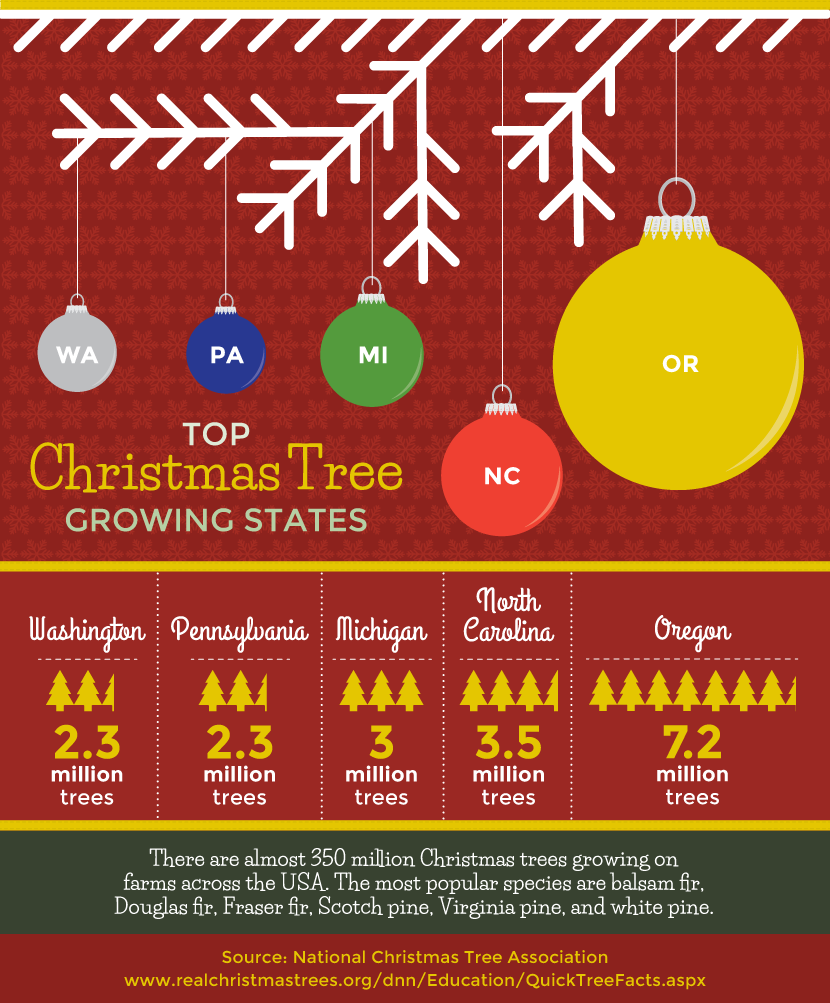I'm Dreaming of a Green Christmas
’Tis the season to be kind to the environment.
Instead of faux Christmas trees, energy-draining light displays, and gifts wrapped in layers of tissue, paper, ribbons, and bows, start dreaming of a green Christmas. It’s possible to celebrate the season with minimal impact to the environment – and without stripping the fa la la la la out of the festivities – by making a few eco-friendly changes to your Christmas traditions.
Start With the Tree
It might seem counterintuitive, but purchasing a fresh-cut Christmas tree is better for the environment than assembling an artificial tree in the living room. Christmas trees are grown on tree farms, and their stock is replenished annually; on the farm, trees provide habitats for songbirds and small mammals such as mice and rabbits. Once the holidays are over, cut trees can be shredded into mulch for the garden or sent to a municipal compost pile.
In contrast, artificial trees are made with petroleum-based materials and are often shipped from overseas; once their branches start looking shaggy, they are sent to the landfill.

It does take a lot of natural resources to grow a live Christmas trees. Most growers spray fertilizers and pesticides on their farms. The good news is that pesticide use is declining on tree farms. The North Carolina Cooperative Extension found a 71 percent decrease in pesticide use between 2000 and 2013.https://christmastrees.ces.ncsu.edu/environmental-impacts/
A growing number of Christmas trees are also organic or Certified Naturally Grown. According to the 2014 USDA Census of Agriculture, there are 47 certified organic Christmas tree farms across the United States.http://www.agcensus.usda.gov/Publications/2012/Online_Resources/Organics/organics_1_013_014.pdf
Look for organic Christmas tree farms online or search state-by-state listings of Certified Naturally Grown farms.
Rethink Holiday Decorations
Yes, a Clark Griswold-esque light display will remind you – and all the neighbors in a five-mile radius – that it’s Christmas, but the amount of energy it takes to power a high-voltage holiday light display? Yowza!
(Curious about how much power it takes to keep your lights glowing throughout the season? Duke Energy has a fabulous holiday lighting calculator that will help you figure it out).
You could tone down your holiday lighting display to keep energy use (and the environmental impact) in check. Not an option? Switching from traditional strands to light-emitting diode (LED) bulbs offers the same festive flair without the same energy or environmental costs.

LEDs use 75 percent less energy than traditional incandescent bulbs. In addition to cutting energy costs, the U.S. Department of Energy also notes that LEDs are sturdier, safer, and longer lasting than other holiday lights, which means less waste because you replace strands less often.
Remember to put your lights on timers! Leaving holiday lights turned on 24 hours a day will quadruple your energy use compared with leaving them on for six hours. Set your timer to turn the lights on at dusk and leave them on until you go to bed. You can enjoy the lights all evening without burning energy overnight.
At the risk of sounding like Scrooge, it’s not only holiday light displays that affect the environment. The plastic Santa on the lawn, the faux wreath adorning the door, and the miniature decorations hanging on the tree can cause environmental harm.
Christmas decorations made from petroleum-based materials, such as PVC, are often manufactured and shipped from overseas. One news article notes that Yiwu, a Chinese city south of Shanghai, makes over 60 percent of the world’s Christmas decorations.

You don’t have to skip the festive décor. Instead, look for decorations made by local companies and artists using natural materials. Christmas craft bazaars, neighborhood boutiques, and Etsy are great sources for items such as wreaths made from evergreen boughs and dried berries, crocheted snowflakes to hang on the tree, and logs turned into reindeer.
You can make your own decorations, too. An old-fashioned string of popcorn and cranberries will look great on the tree. Once the holidays are over, you can hang the garland in an evergreen tree in your backyard and let the birds feast on your creation.
When Christmas is over, remember to add natural materials such as branches, evergreen boughs, and poinsettias to the compost pile.
Give a Gift to the Environment
Part of the magic of the season is tearing into the brightly colored paper to reveal what Santa left under the tree, but the annual trash from giftwrap and holiday shopping bags tops 4 million tons per season!
Once you tear the wrapping paper off of a holiday gift, it ends up in the recycle bin (unless the paper is dyed or laminated or if it contains extras such as glitter, which can’t be recycled). To minimize the environmental impact while keeping gifts under wraps, look for paper made from recycled materials or choose gift bags, which can be re-used for multiple seasons.
Reuse ribbons and bows, too. If every family in the United States reused two feet of holiday ribbon, it would save 38,000 miles of ribbon – enough to tie a bow around the entire planet.
If you’re mailing gifts, use recycled newspaper or leftover paper from your shredder to pad gifts. You can also use real peanuts and include a note asking the recipient to feed them to the squirrels once the box is unpacked. These green materials protect your packages just as well as bubble wrap or Styrofoam but have none of the negative effects on the environment.
You don’t have to abandon your favorite holiday traditions to minimize your effect on the environment. Look for simple ways to celebrate a green Christmas and consider it your gift to the environment.
Embed the article on your site

